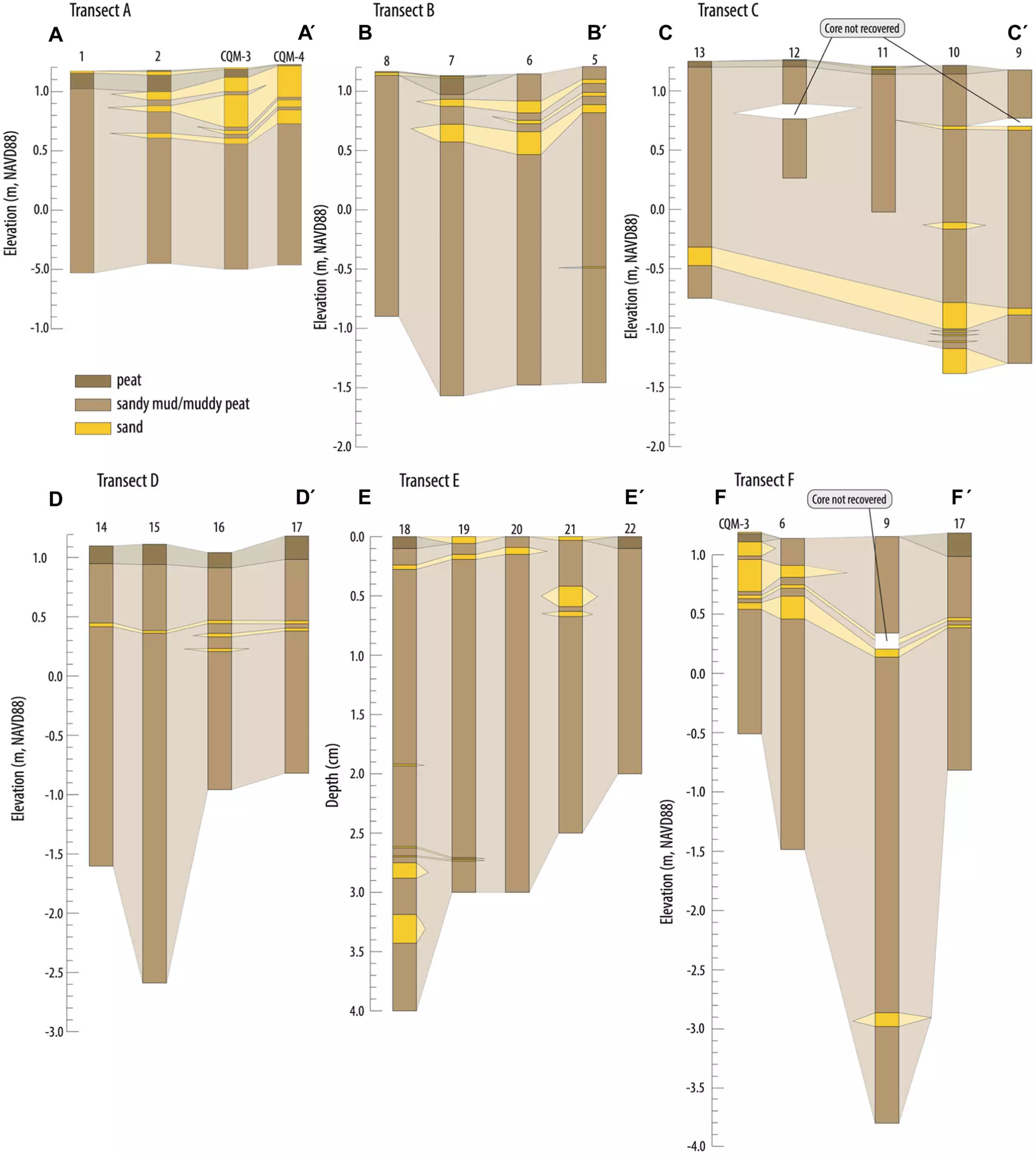In a groundbreaking endeavor led by Rutgers University-New Brunswick, a team of researchers has harnessed a novel technique that may usher in a new era of understanding regarding the phenomenon of hurricanes and their evolution over time. By analyzing coastal sediments, specifically in New Jersey’s Cheesequake State Park wetlands, the scientists have unearthed evidence of significant storms that date back more than 400 years. This development not only enriches our historical narrative of extreme weather events but also serves as a pivotal tool for predicting future hurricane patterns in the face of climate change.
The Power of Overwash Deposits
At the core of this research initiative is the analysis of overwash deposits, which are created when hurricanes thrust storm surge-induced sand from beaches into adjacent wetlands. These layers of sediment are more than mere geological artifacts; they are historical texts, narrating the saga of storms that have blanketed the region long before our contemporary observational infrastructure came into being. The researchers examined eight distinct sediment layers, revealing intricate details about hurricanes, including one storm that occurred as early as 1584, predating existing instrumental records.
This approach illuminates a crucial inadequacy in traditional methods of storm analysis, which have primarily relied on tidal gauges and historical records. While these instruments offer invaluable real-time data, they are inherently limited in their capacity to extend the timeline of storm activity into the distant past. Kristen Joyse, the lead author of this compelling study and a coastal sedimentologist, emphasizes the necessity of pushing the geological timeline further to acquire a comprehensive understanding of storm behavior over centuries.
Scientific Methodology: Merging Ancient and Modern Techniques
The research team implemented a meticulous methodology aimed at verifying the accuracy and relevance of their sediment findings. By comparing the sediment core data to modern tidal gauge records, which measure extreme water height events along the coast, the researchers could substantiate their claims about historical storm activity. For instance, they observed the correlation between sediment deposits and known hurricanes, including the infamous Hurricane Sandy of 2012.
Sediment samples, extracted from depths of up to eight feet, were thoroughly analyzed for various characteristics, including grain size, organic content, carbon isotopic composition, and microfossils. This thorough analysis facilitated the differentiation of storm-induced layers from background sediments, thereby painting a clear picture of past hurricane activity. What’s particularly noteworthy is the precision achieved through radiocarbon dating and examinations of pollen concentrations, which allowed the scientists to pin down the age of these sediment layers accurately.
However, the findings underscore a significant caveat: While the sediments capture remarkable historic storms, they do not encapsulate every extreme weather event that has touched land. This discrepancy raises essential questions about the nature of sediment preservation and its implications for our understanding of storm frequency and severity.
Implications for Climate Science
The revelations emerging from this study hold profound implications for both historical climate science and future forecasting. As Joyse points out, the findings may lead to better hypotheses regarding how varying climate conditions influence storm behavior over centuries. With a clearer lens on past storms, scientists can construct more accurate scenarios of what future storm frequencies may look like under changing climatic regimes.
The research also poses intriguing questions about the criteria that determine which storms leave an imprint in the sedimentary record, and how those probabilities might shift over time. It bridges the gap between historical natural disasters and contemporary climate concerns, making the data not just academic but practically significant for future urban planning, disaster preparedness, and environmental resilience.
A Call for Interdisciplinary Research
As the inquiry into storm patterns evolves, it becomes clear that an interdisciplinary approach is essential. Engaging experts across various scientific fields, from geology and climatology to environmental science and statistics, can enhance our understanding and predictive capabilities surrounding extreme storms. Collaborative research endeavors, like the one undertaken by this Rutgers-led team, are fundamental in fostering the kind of thought-provoking dialogue that can lead to meaningful advancements in how we interpret and respond to natural disasters.
The innovative application of sediment analysis to decode the history of hurricanes marks a significant turning point. It not only enriches our understanding of past climatic events but also equips us with insights necessary to navigate the turbulent waters of the future. Understanding our past will prove invaluable as we confront the environmental challenges of tomorrow, emphasizing the need for continuous exploration and analysis in the face of ever-evolving natural phenomena.

